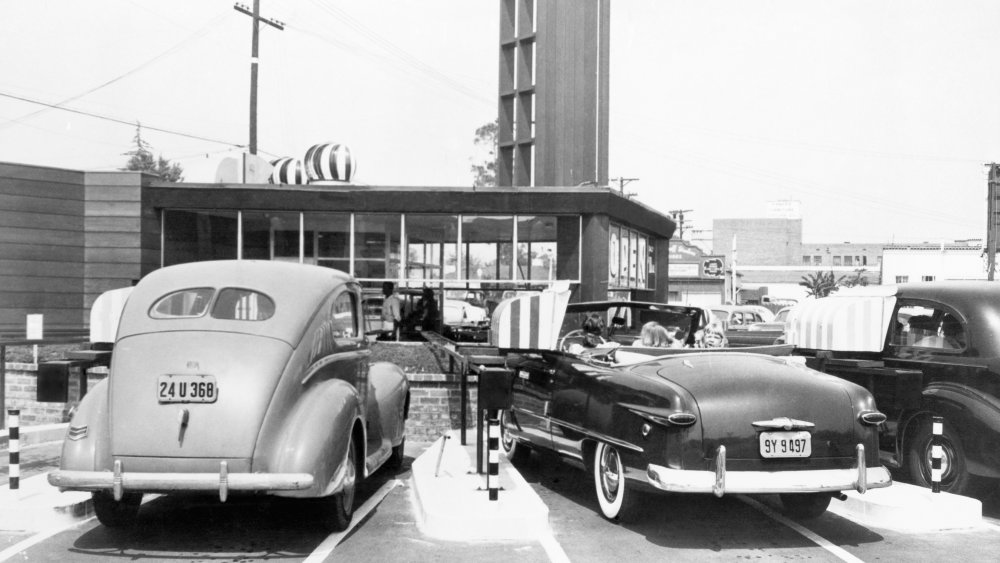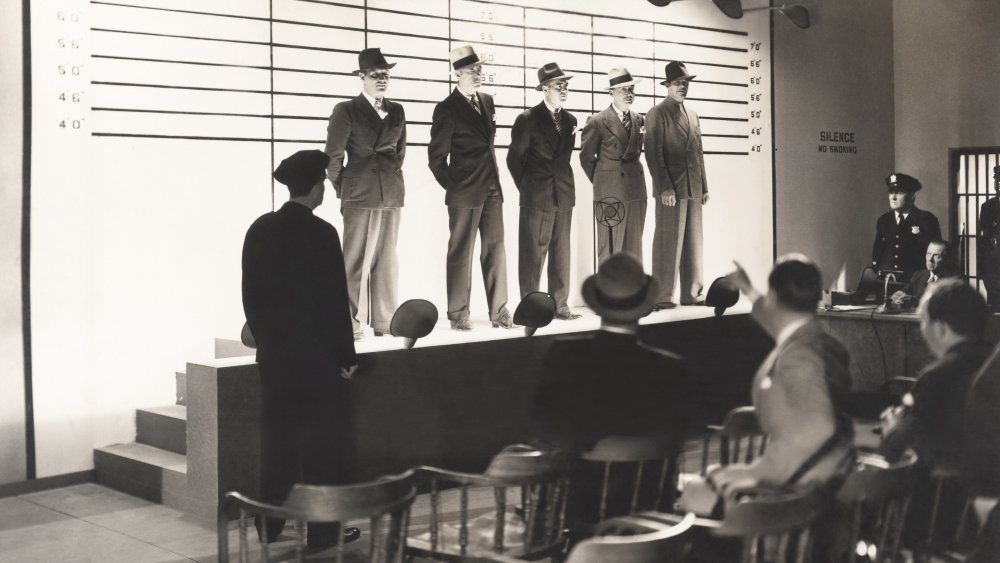The True Meaning Behind The Black Dahlia's Name
The year is 1947. The Allies have slogged through years of bloody warfare, but in the end emerge triumphant over the powers of the Axis. The boys are home. The world is at peace. Nothin' but good times ahead. Right?
Well, for some, maybe, but not for Elizabeth Short, described by the FBI as a "Hollywood hopeful." Age 22, Ms. Short was discovered the morning of January 15 by a woman taking a walk with her child through a Los Angeles neighborhood. Ms. Short was naked and unresponsive, at least in part because she had been cut in half at the waist, very cleanly.
Her fingerprints were on file — she'd applied for a job at an army commissary in January 1943 — as was her mug shot, because she'd been arrested seven months later in Santa Barbara for underage drinking.
There was no blood on or near the body, which meant that what was done was committed elsewhere.
Hair dyed black, green eyes, 5'6", 118 pounds; an FBI file reports she had "bad teeth."
Despite a national search, the killer was never found
The press in those days, particularly newspapers, had a penchant for giving sensational cases nicknames. Short's story found her dubbed "The Black Dahlia." There were reports that she preferred sheer black clothing, and a popular movie released the year before was titled The Blue Dahlia. It starred Alan Ladd and Veronica Lake, with an original screenplay by Raymond Chandler, and was an early entry in the post-war noir genre of film. The title referred to a nightclub that figures prominently in the story.
Lots of people wrote letters claiming inside knowledge. There were a few confessions that didn't hold up. Some were spookier than others.
There has been lots of speculation about what happened, and when, and where, and by whom. John Gregory Dunne's 1977 novel True Confessions played with the story. TNT played a six-part series titled I Am the Night with more conjecture, plausible or not, about the crime and its solution.
More than 70 years after the fact, the crime remains unsolved, and even the FBI admits it "probably never will be."

